
Return to home page Contact me
Read reviews
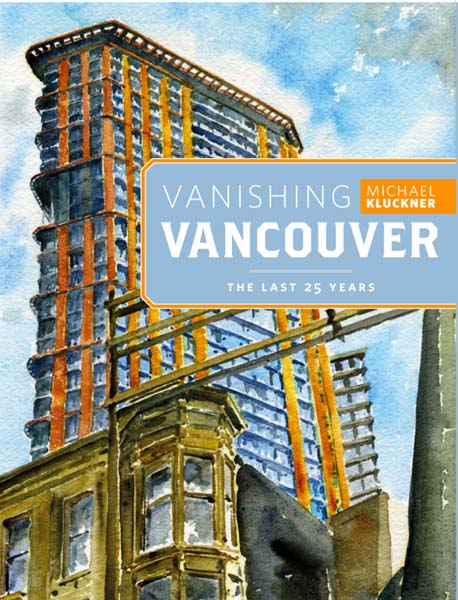 Published in April, 2012, 8 1/2 x 11 inches, 224 pages, softcover, $35 in bookstores. Reviews and other media are posted on my books page.  ,
a book about buildings and landscapes, complements ,
a book about buildings and landscapes, complements  ,
a history book. ,
a history book.About 20% of the text and illustrations refer back to Vital statistics: Publisher, Whitecap Books, ISBN 978-1-77050-067-9 This is what is looks like... |
and, the Table of Contents *Preface & Introduction: to put a little historical context into the last 25 years or so of heritage preservation and development *Landmark City: successes and failures on the downtown peninsula *The Working Harbour: a chapter on the evolution of the port *The Vancouver Shop: changes in design of buildings and tenants in the city's retail districts *The Vancouver House: the evolution of house design in the past 125 years; which ones have held up best.... *The Vancouver Apartment: the evolution of apartments over the last century *The Planted City: urban and sustainable agriculture and changing fashions in gardens *Legacies & Memories: examining how places and buildings link to tell stories *Drawing a Line in the Mud: the yin and yang of Vancouver; trying to keep the historic layers on the landscape.... |
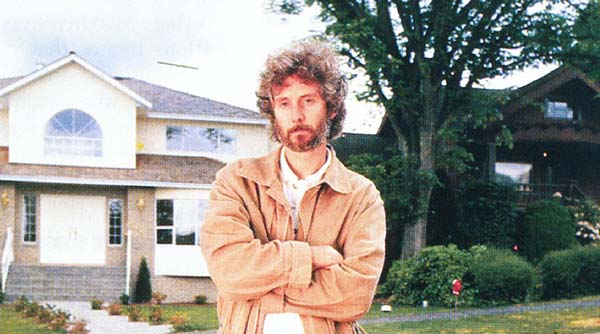 |
Me in 1989, expressing my
displeasure at the addition of a Monster House to the
vintage streetscape on the 2000-block of West 36th. Photo
from Heritage Canada magazine.
|
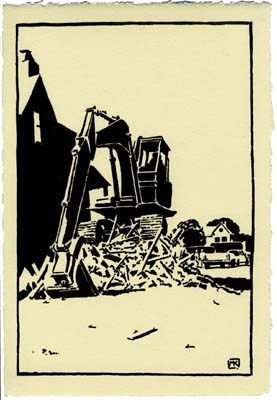 Although there was a
hiatus in the 1990s, the builders' and developers'
juggernaut has resumed the pace it had in the post-Expo
years of the late 1980s.
Above: by lunchtime, a high-hoe has reduced a small house on the East Side to rubble Right: Developers hard at work providing housing for the expanding city.... |
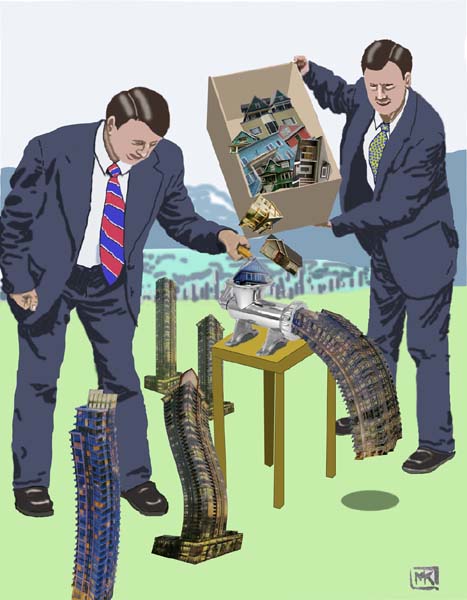 |
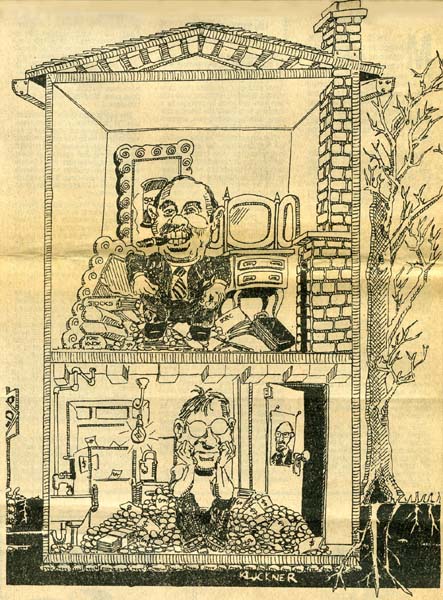 |
Affordability... "Only 40% of our society can afford to buy a home today ..." Q: When was this statement first made in Vancouver? a) 1967 b) 1987 c) 2007 (The illustration is a cartoon I did for the Vancouver Sun in 1980, at the beginning of an earlier spike in prices, when a house in Kerrisdale or Kitsilano cost $150,000 or so.) (Answer: a) |
Landmark City
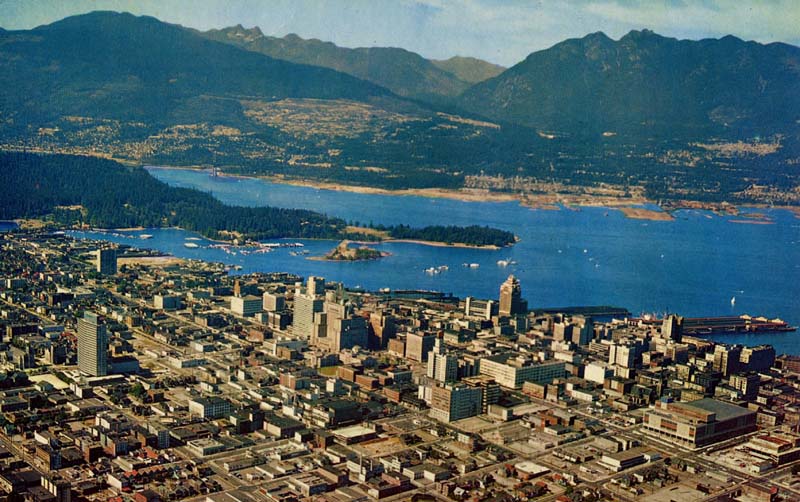
| Above:
Downtown Vancouver about 1960, a sea of parking lots, the
stage set for the massive condo redevelopment of the
1990s-2000s (Photographer unknown). Below: in the middle of this photograph, taken in 1965, is the Hotel Georgia, representing the triumph of residential over commercial in the downtown – it narrowly avoided replacement by an office tower in the '90s. (Photo by George Weinhaupl) Right: The change of scale in the 21st-century city: the enormous W tower on the former Woodward's site, looming above James Garden's little 1888 apartment building on Cambie Street. 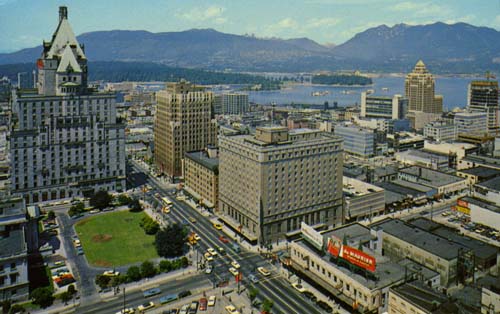 |
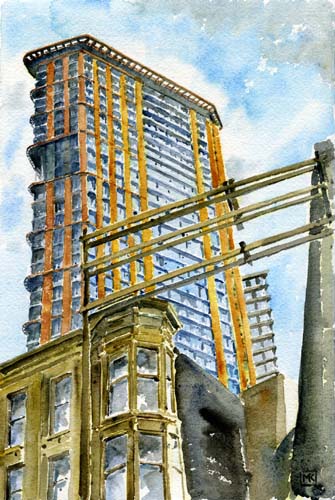 |
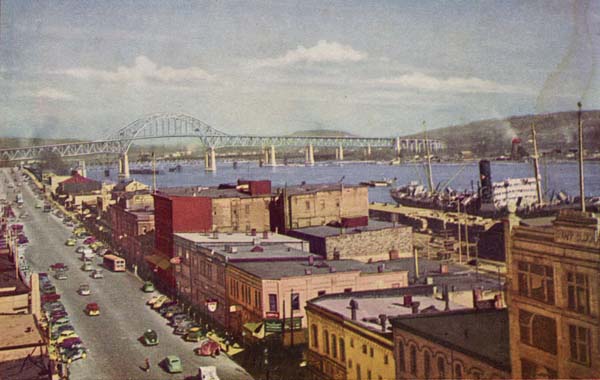 |
I've written a
section of this chapter entitled For Whom The Bridge Tolls,
reviewing the history of the region's bridges, including the
Pattullo, photographed here in the 1940s. Another section describes the challenges of saving the city's historic school buildings. Brief biographies with photos highlight the movers and shakers in the city – architects, engineers and developers – in the Modernist era after the Second World War. |
The Working Harbour
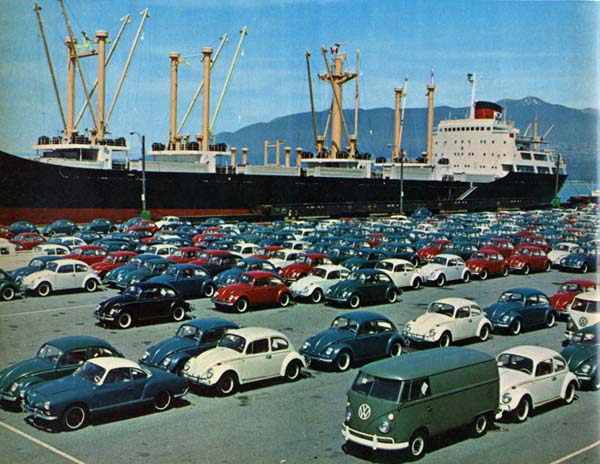
Unloading VWs at the National Harbours Board wharf on Burrard Inlet in the 1960s.
Photo by Clyde Herrington
The Vancouver Shop
 |
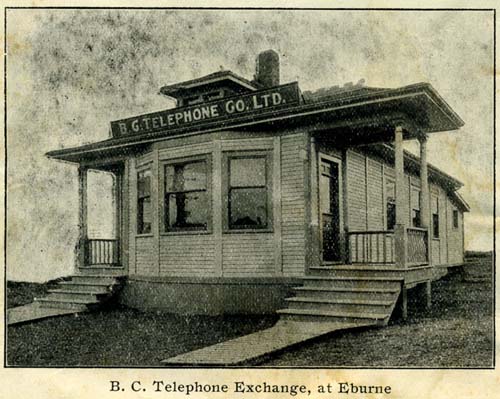 The chapter
looks at the evolution of shops in Vancouver, noting the
passing of the neighbourhood corner stores that were a big
part of the city in the Vanishing
Vancouver of 20 years ago, and the disappearance of
theatres. New designs are critiqued, you could say.
Left: Scott's Grocery on Victoria Drive, one of a handful of independent corner stores left in the city. Above: a BC Mills, Timber & Trading Company prefab, adapted for BC Tel's use about 1910. Another design, also a prefab, survives as the museum of the Aldergrove Heritage Society. |
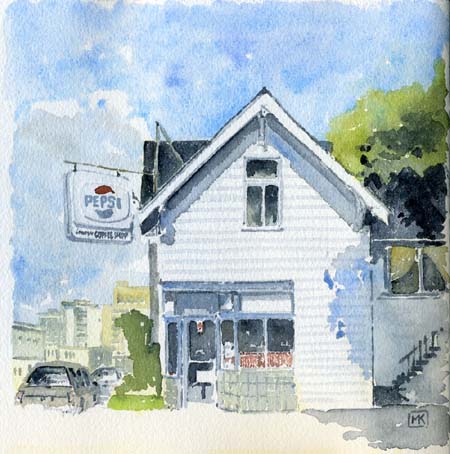 |
 A number of illustrations
in this chapter record the city's remaining traditional
cafés and buried houses – houses left over from the days
when commercial streets were residential, with shops built
in front of them.
|
The Vancouver House
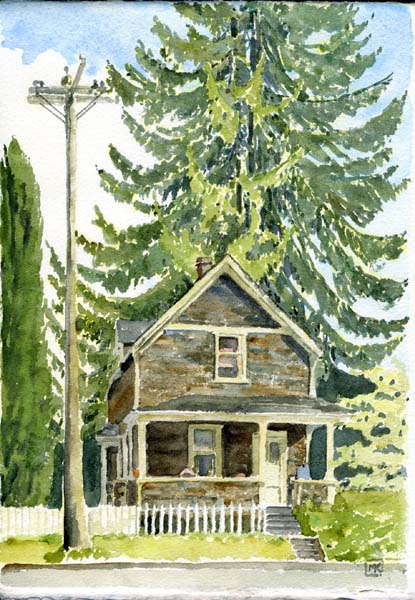 |
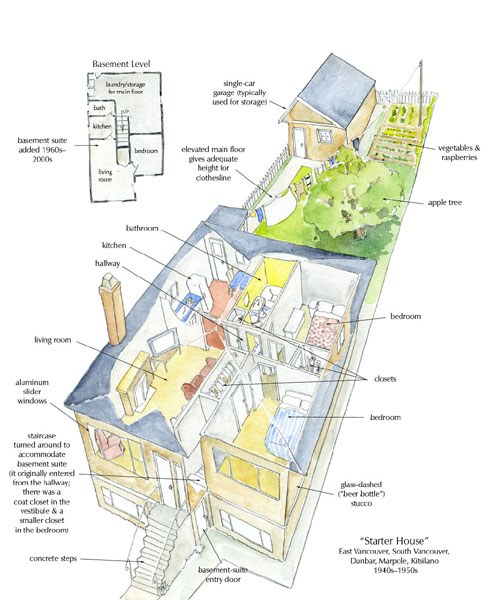 |
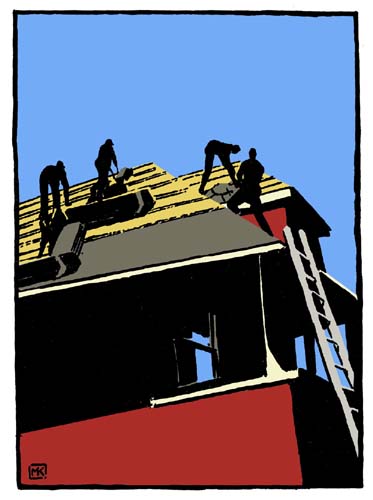 |
This long
chapter traces the evolution of the Vancouver house since the
city's early years, using a combination of my
watercolours and other illustrations and analyzing which house
styles have been best able to adapt to the changing nature of
the city, for example by easy conversion into apartments. There are a number of house-plan cutaways, such as the one above for the ubiquitous "starter house" mainly found in East Vancouver. And, a final section looks at renovations and how houses have survived the vagaries of fashion. |
The Vancouver Apartment
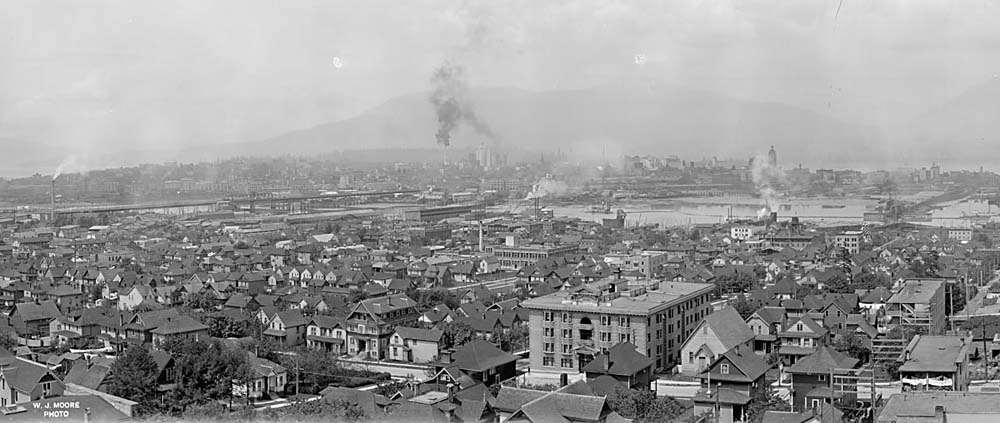
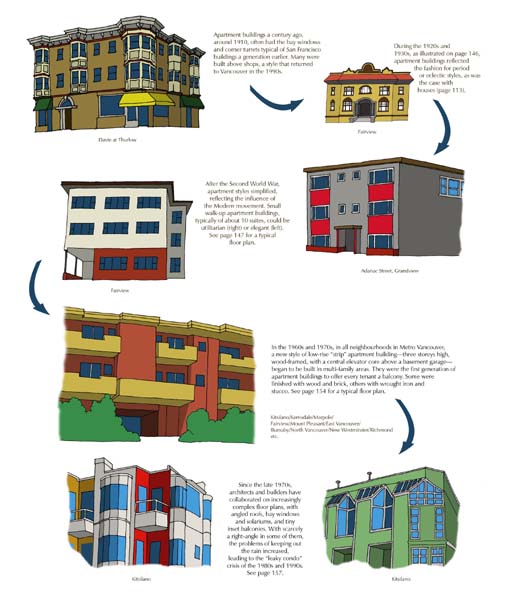 |
I became
interested in apartments again partly because we rented
several furnished ones, short-term, during the years we were
making the transition from our former existence on a farm to
Australia and then back to Vancouver. The chapter traces the design changes of multi-family buildings, beginning with the rooming houses once so common all over the city, and explains the evolution of apartment ownership, from 'co-op' to strata-title. Q: When was this statement published in the newspaper: a) 1962 b) 1972 c) 1982 d) 1992 "Most of Vancouver's children will probably be cliff-dwellers when they grow up ... but their steel and concrete 'caves' will have hardwood floors or wall-to-wall carpets, picture windows with a fabulous marine view, air-conditioning, coloured plumbing, dishwashers and balconies in the sky..." (Answer: a) |
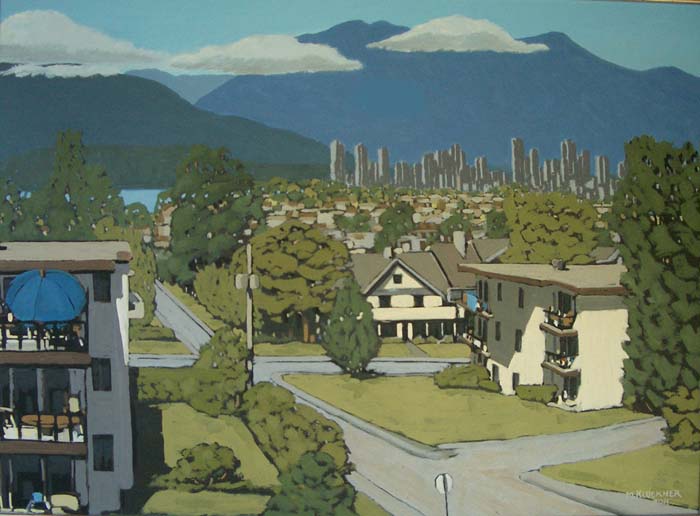
The Planted City
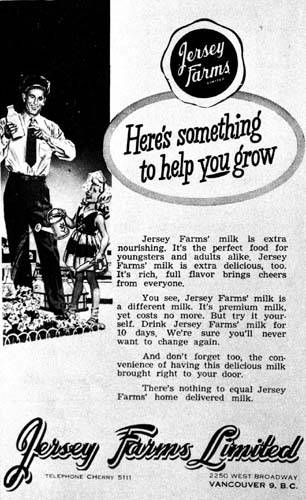 |
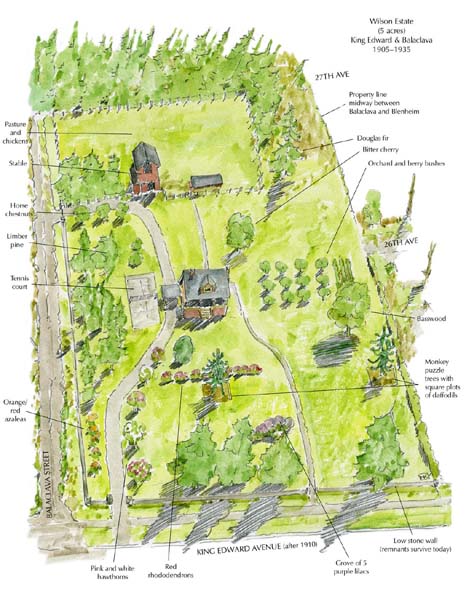 |
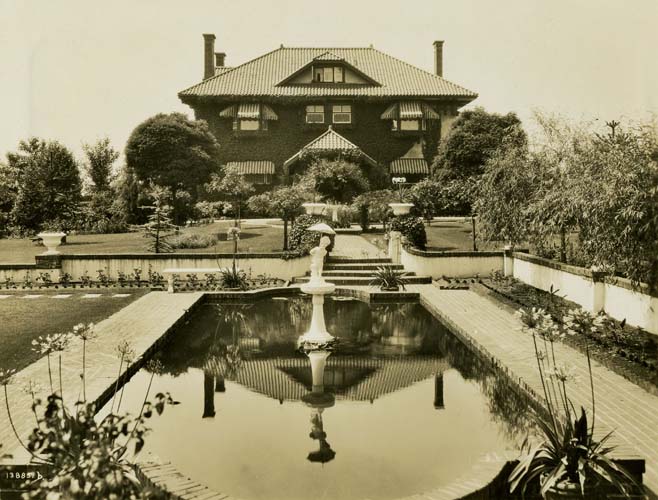
... a chapter about farms and gardens, the most ephemeral part of the city's history
Legacies & Memories
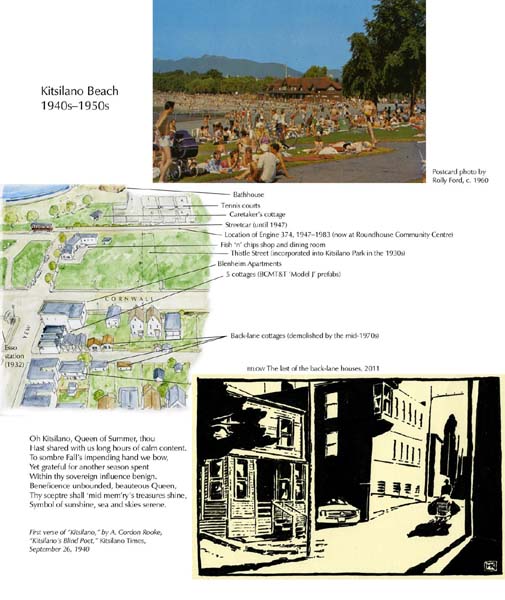 |
The
concluding chapter explores the way memories get attached to
particular places in the city, creating the set of historical
layers that are essential for Vancouver's maturity. Every
other mature city in the world is a layered experience of old
and new; every time Vancouver clearcuts a site, losing another
piece of its past, an element of its richness evaporates. The book's coda, a brief few pages, focuses on the city's yin and yang – its highrise glass and steel downtown, its leafy, lowrise neighbourhoods – reflecting on the challenges the city faces as it densifies and attempts to become a green, sustainable modern place. |
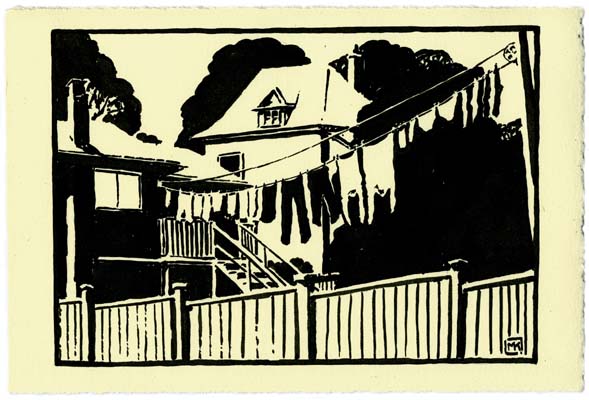
Reviews & Columns(supplementing the on-line ones on the books page)
Vancouver Sun, August 3, 2013, a guest column examining some of the themes from VV25
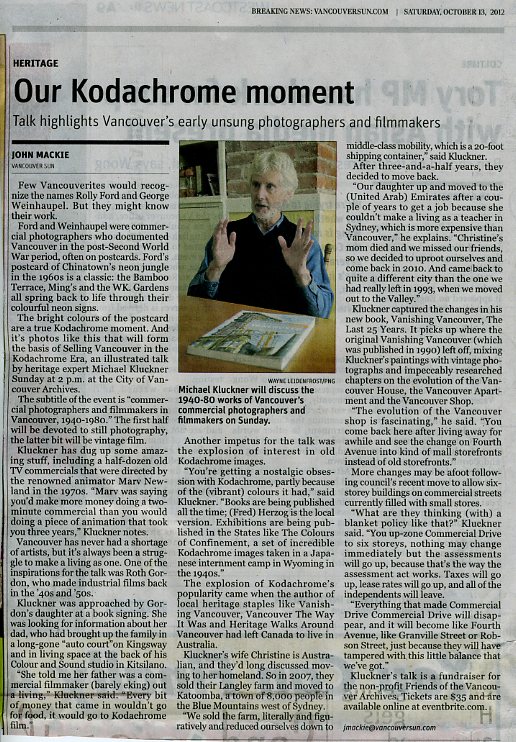
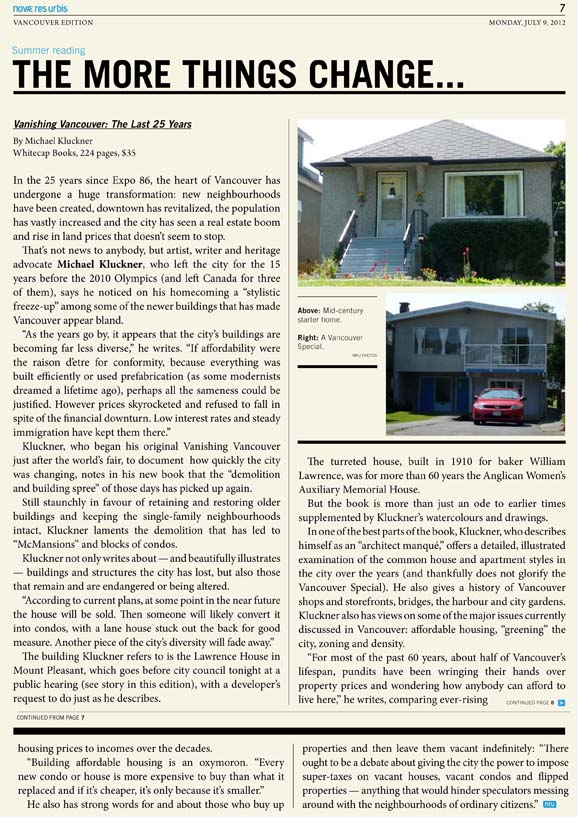
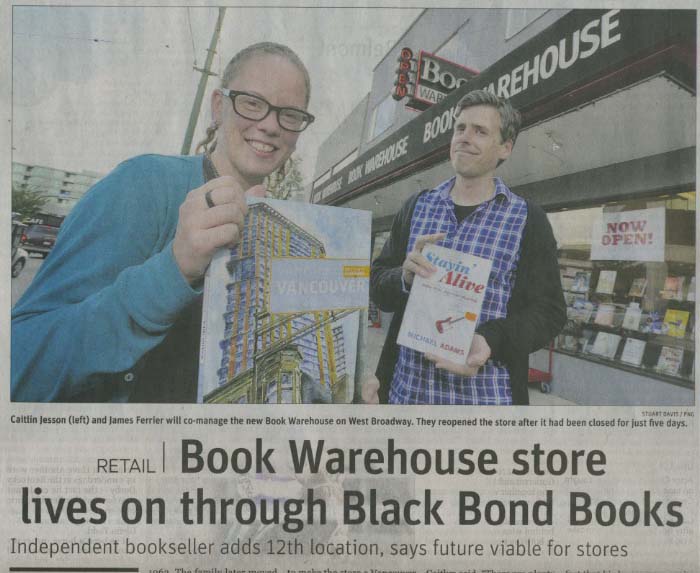
Return to home page Contact me